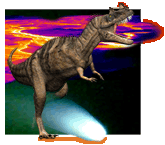Eocene-Oligocene Faunal Turnover and Antarctic Glaciation
Type
Low-latitude planktic foraminiferal populations experienced a major faunal turnover between the late middle to early late Oligocene. This faunal turnover involved over 80% of planktic foraminiferal species and took place quasi-continuously over an interval of approximately 14 m.y. The overwhelming majority of species becoming extinct during this interval were surface-dwelling forms that were ecologically replaced by more cold-tolerant subsurface-dwelling species as the thermal contrast between surface and subsurface (> 400 m) marine pelagic habitats diminished. Within this 14 m.y. interval of widespread ecological reorganization of the planktic foraminiferal faunas, two subintervals stand out as being characterized by brief, but markedly intensified turnover; these are the middle/late Eocene and the early/late Oligocene. Contrary to previous reports, there was no major faunal change across the Eocene/Oligocene (E/O) boundary. Stable isotope records and glacio-marine sediments from high latitude southern ocean ODP Legs 113 and 119 provide evidence of major glaciation on East Antarctica during the late middle to late Eocene and early Oligocene with glaciation persisting into the late Oligocene. Carbon and oxygen isotopic gradients for planktic and benthic foraminiferal species reflect decreasing surface productivity and thermal stratification during this time. The remarkably close correspondence between these stable isotope records and planktic foraminiferal turnovers strongly suggests that changes in climate and productivity were the primary driving forces behind the gradual decline and eventual extinction of the Eocene planktic foraminiferal fauna. PDF

